Days 1-7: In previous posts
Day 8: Kruje, Shkodër (overnight in Shkodër)
Day 9: Shkodër (this was supposed to have been Theth National Park) (overnight in Shkodër)
Days 10, 11: Valbonë a.k.a. Valbona (overnight on day 10). Return to Shkodër and drive to Golem (overnight in Golem)
Day 12: Return to Orikum by 8:00 a.m. to return rental car (we aren’t counting this day in our road trip)
Today’s post covers day eight.
I couldn’t stop myself from taking a picture (I didn’t even try) of this building that looks like it is from a fairy tale. It is built on the edge of a drop-off and half of it has no ground beneath it!
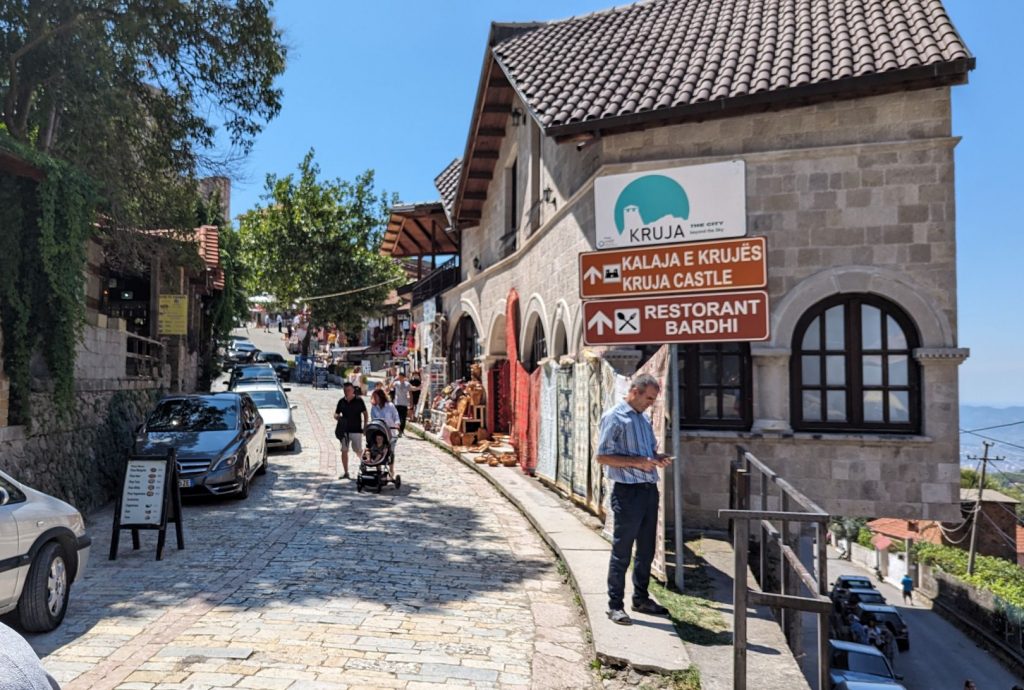
Now, a quick stop at the town of Krujë and its castle.
The Krujë Castle is a castle in the city of Krujë, Albania and the center of Skanderbeg’s rebellion against the Ottoman Empire. The castle was built in the 5th or 6th century, perched on Krujë hill.
I looked at a variety of sources to learn about Skanderbeg, and found that Wikipedia offered a good summary:
The Albanians’ resistance to the Ottomans in the 14th century and especially in the 15th century won them acclaim all over Europe. Gjon Kastrioti of Krujë was one of the Albanian nobles and clan leaders who submitted to Ottoman suzerainty in 1425. He was compelled to send his four sons to the Ottoman capital to be trained for military service. The youngest, George Kastrioti (1403–68), who would become the Albanians’ national hero, captured the sultan’s attention. Renamed Iskander when he converted to Islam, the young man participated in military expeditions to Asia Minor and Europe becoming one of the main Ottoman generals. When appointed to administer a Balkan district, Iskander became known as Skanderbeg. After Ottoman forces under Skanderbeg’s command suffered defeat in a battle near Niš (present-day Serbia) in 1443, Skanderbeg rushed to Krujë and tricked a Turkish pasha into surrendering the Albanian fortress. Skanderbeg then embraced Roman Catholicism and declared a holy war against the Ottoman Empire.
On 1 March 1444, Albanian chieftains gathered in the cathedral of Lezhë with the prince of Montenegro and delegates from Venice and proclaimed Skanderbeg commander of the Albanian resistance. All of Albania accepted his leadership against the Ottomans, but local leaders kept control of their own districts. Under a red flag bearing Skanderbeg’s heraldic emblem, an Albanian force of about 10,000-15.000 men held off Ottoman campaigns against their lands for 24 years when Skanderbeg was commander in chief, until 1478, 11 years after his death.
Three times the Albanians overcame sieges of Krujë. In 1450, the Albanians routed Sultan Murad II himself. Later, they repulsed attacks led by Sultan Mehmed II in 1466 and 1467. In 1461, Skanderbeg went to the aid of his suzerain, King Alfonso I of Naples, against the kings of Sicily by practically defeating all his rivals in southern Italy. Albanians also defeated Venice in 1449 in three battles in the Albanian-Venetian war.
Sometimes the government under Skanderbeg was unstable, however, and at times local Albanian rulers cooperated with the Ottomans against him.
With political and minor material support from the Kingdom of Naples and the Vatican, resistance to the Ottoman Empire continued for 36 years.
Skanderbeg’s long struggle to keep Albania free became highly significant to the Albanian people, as it strengthened their solidarity, made them more conscious of their national identity, and served later as a great source of inspiration in their struggle for national unity, freedom, and national identity. The memory of the mid-15th century resistance under Skanderbeg continues to be important to Albanians, and his family’s banner, bearing a black two-headed eagle on a red field, became the flag under which the Albanian national movement rallied centuries later.
Here are some pictures of the castle and the surrounding hillsides.
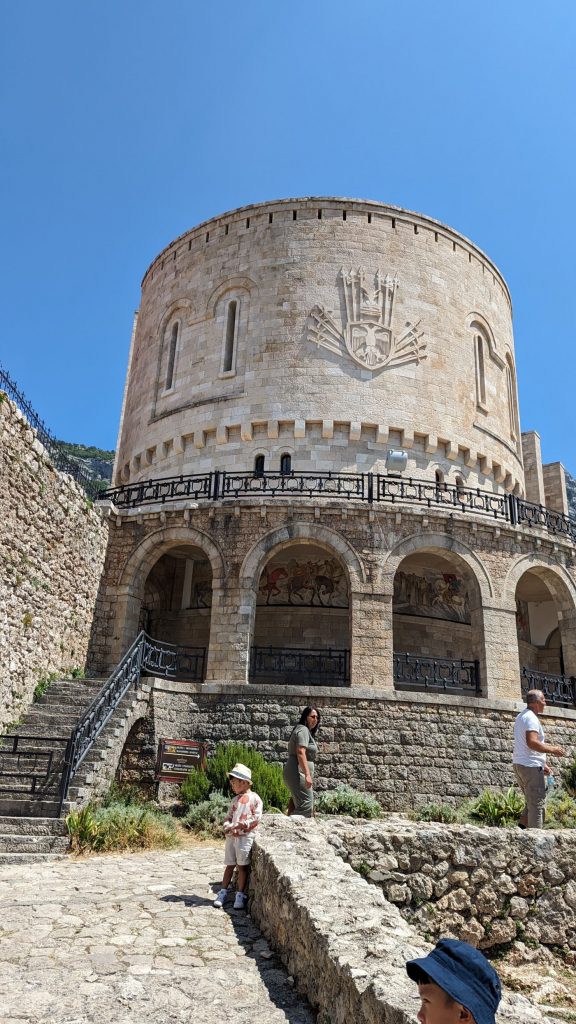
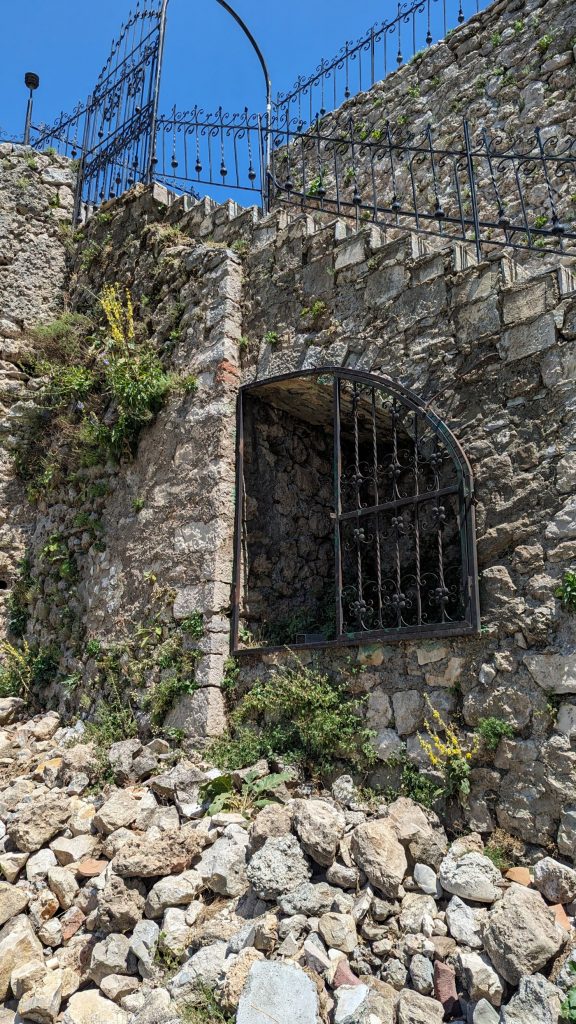
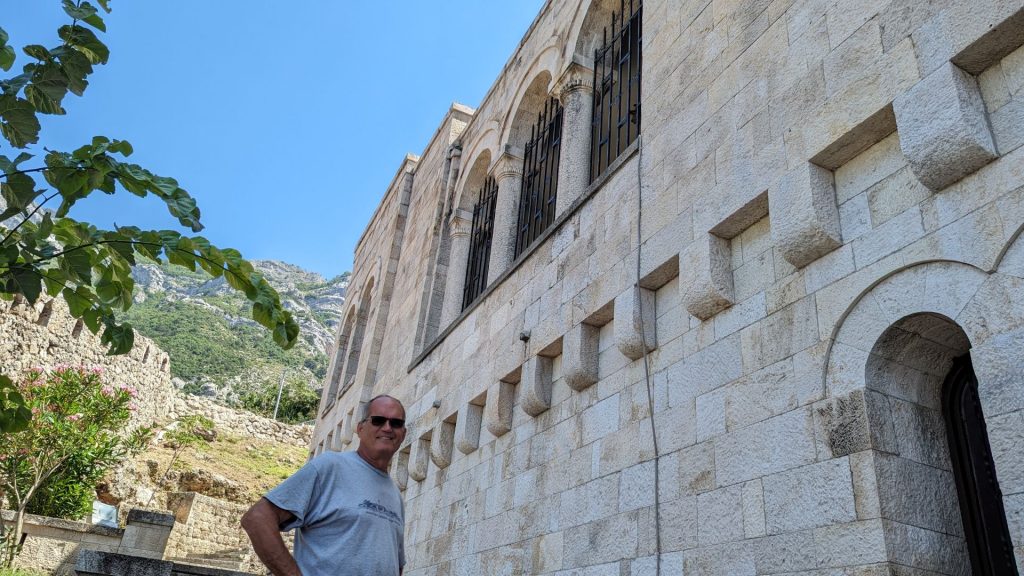
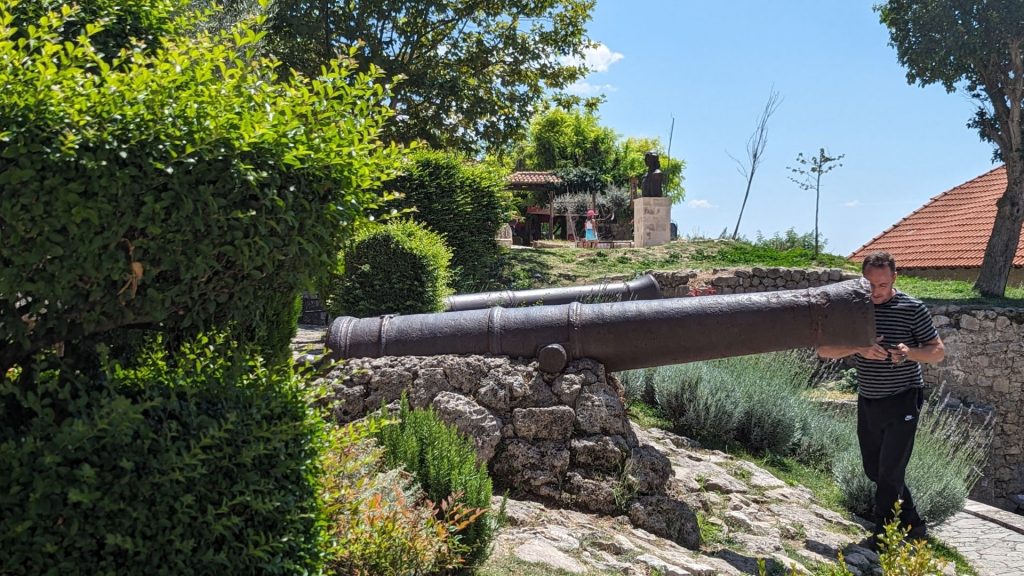
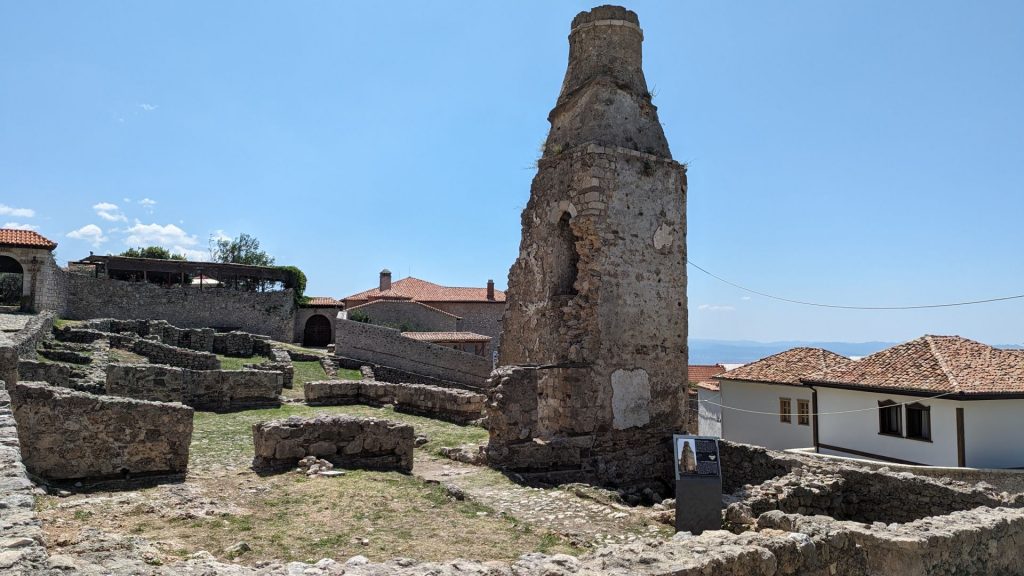
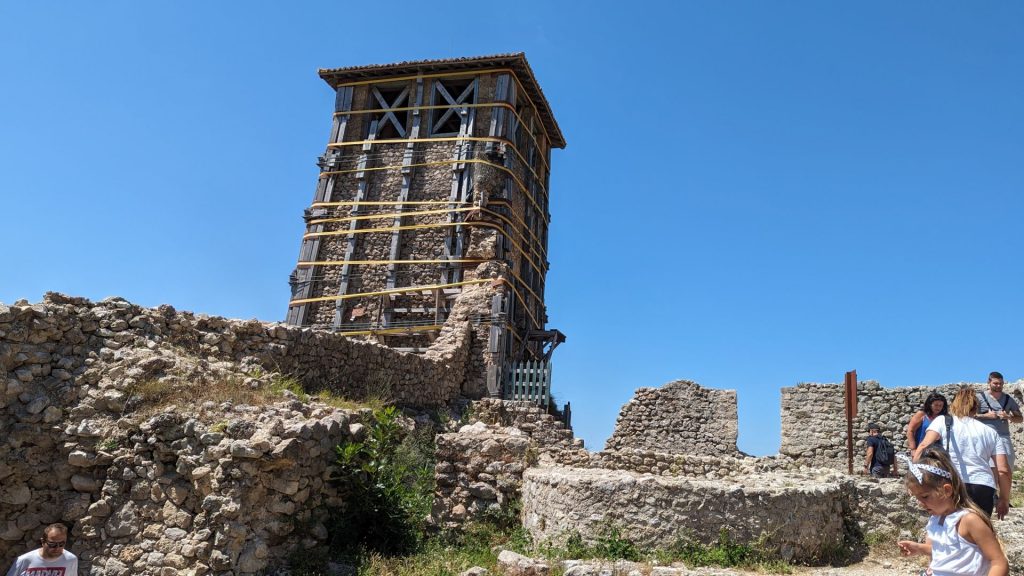
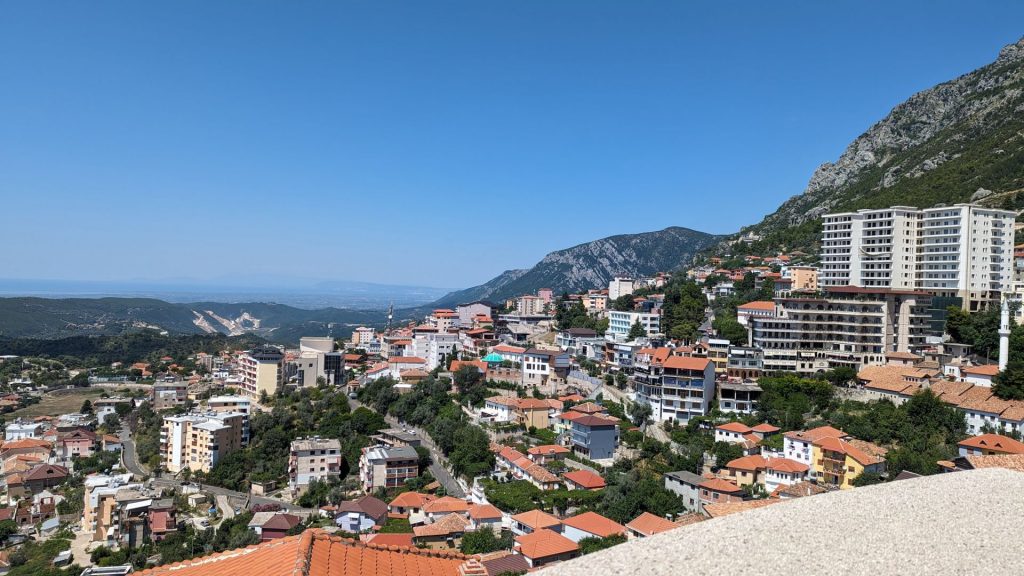
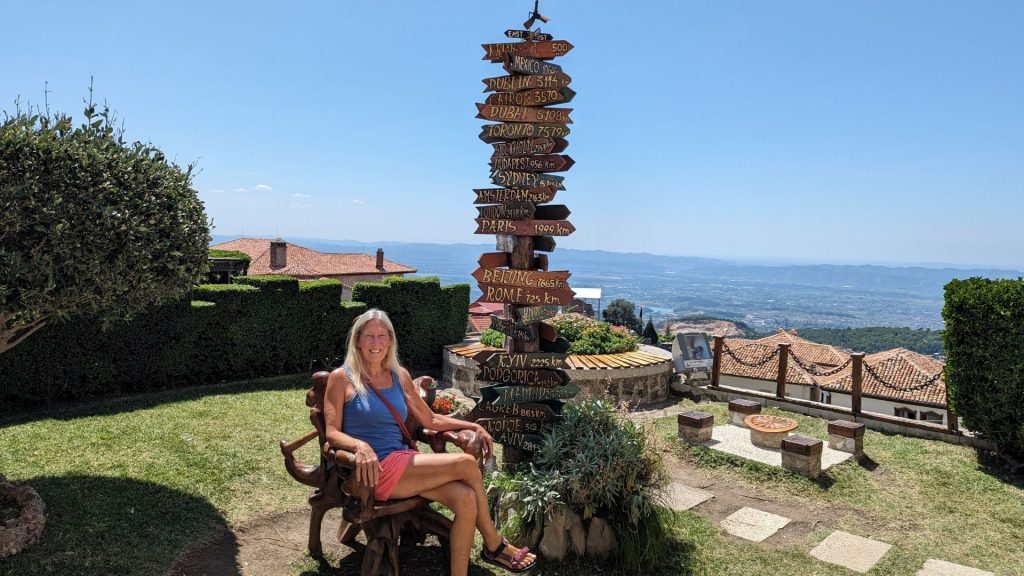
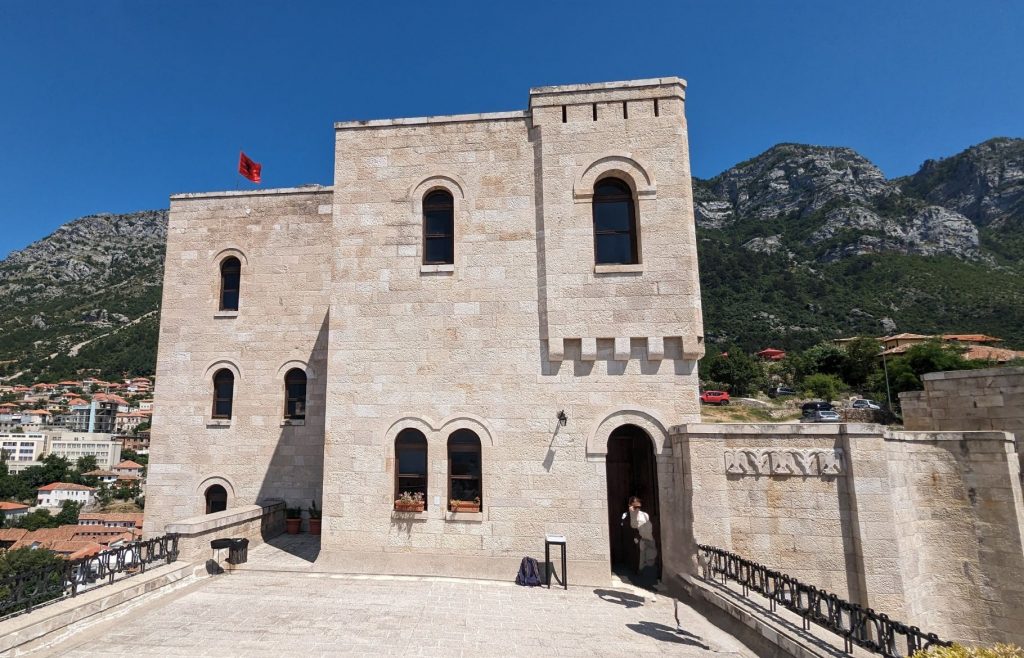
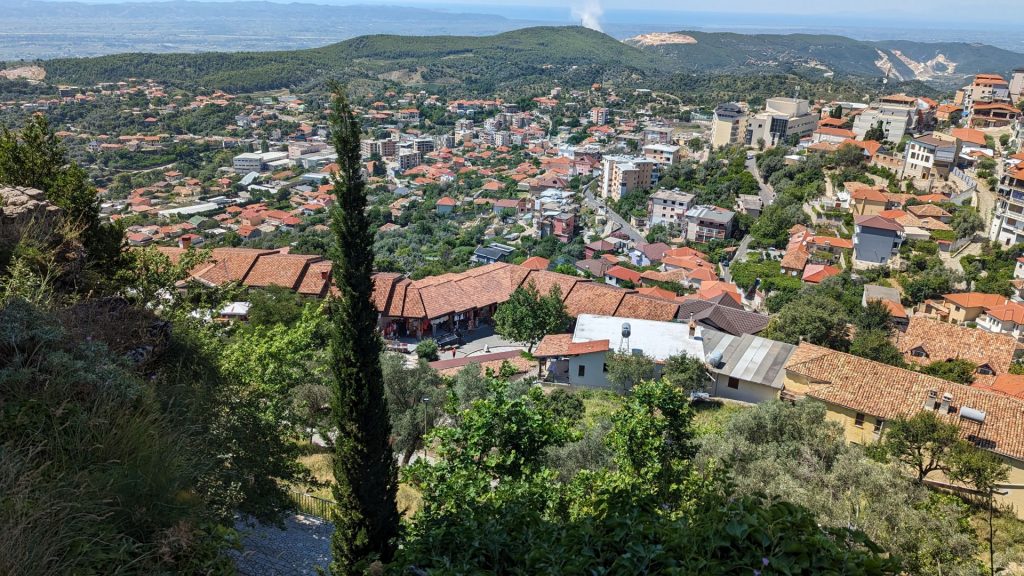
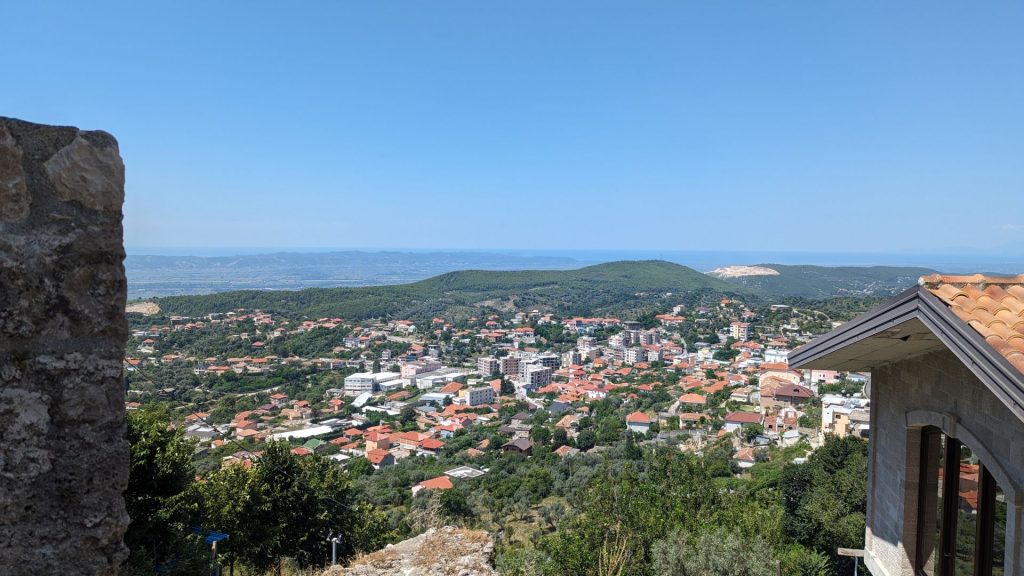
Okay, let’s head into the museum.
The first thing you see when entering the museum is this pretty awesome sculpture and a plaque that basically says that this museum, dedicated to Gjergi Kastnoti Skanderbeg, was built in Krujë because it was the center of the Albanian resistance against the Ottomans in the 15th century and its name has become known all over Europe. The sculptural group presents Skanderbeg in the middle of a group of warriors. The warriors are not named, their garments and headdresses demonstrate the participation of all regions in the war. The female figure shows their participation in battles.
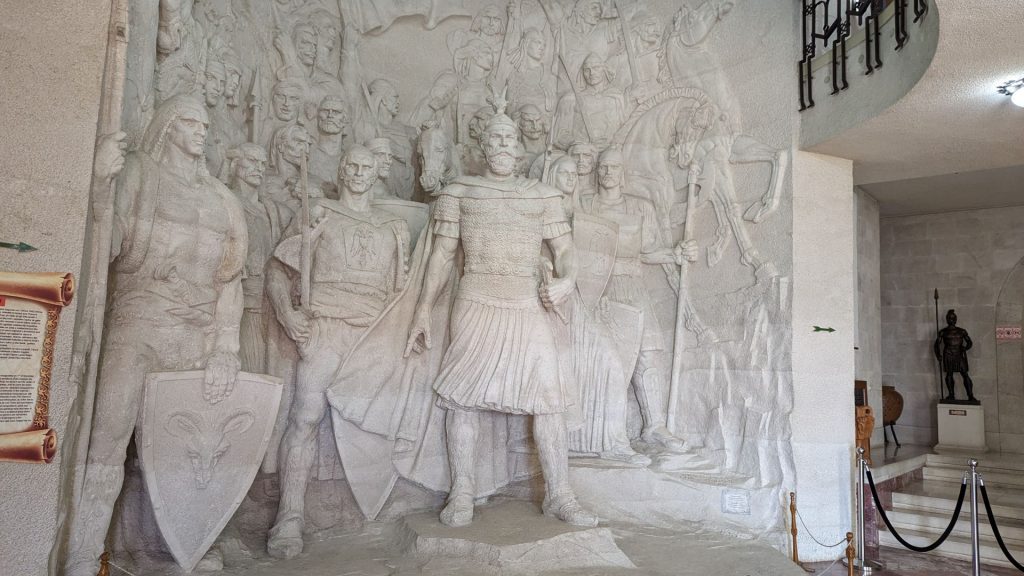
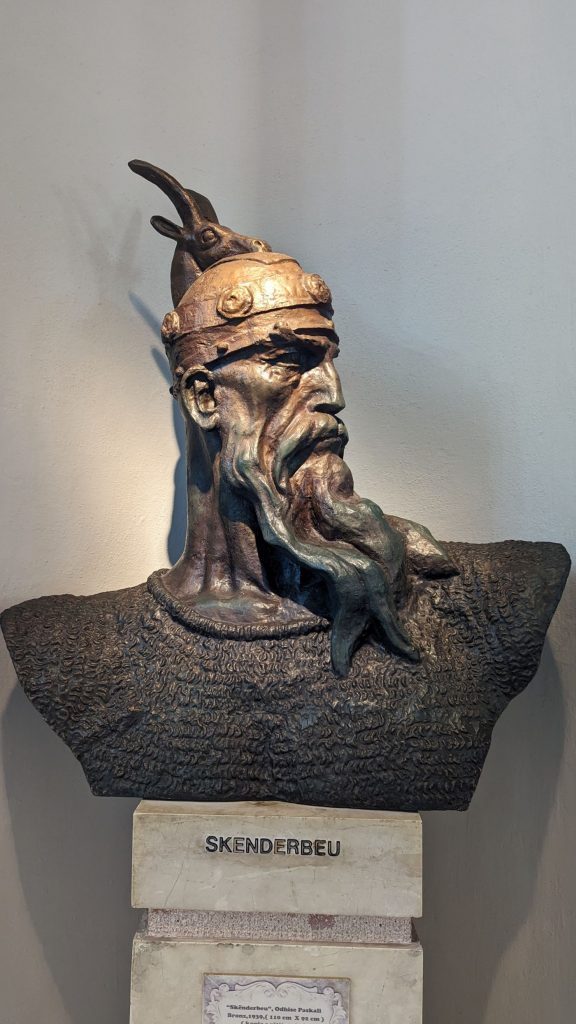
This next picture is of a mural that covers an entire wall. Through this monumental landscape titled “Endurance,” the artist, Naxhi Bakalli, has generalized the resistance and victories of Skanderbeg in battles that took place during 25 years, against the Ottoman armies and sultans who surrounded Krujë on 1450, 1466, and 1467. The completion of this painting with the largest dimension in this museum, lasted 11 months and ended only a couple of days before the inauguration of the museum. Whew!
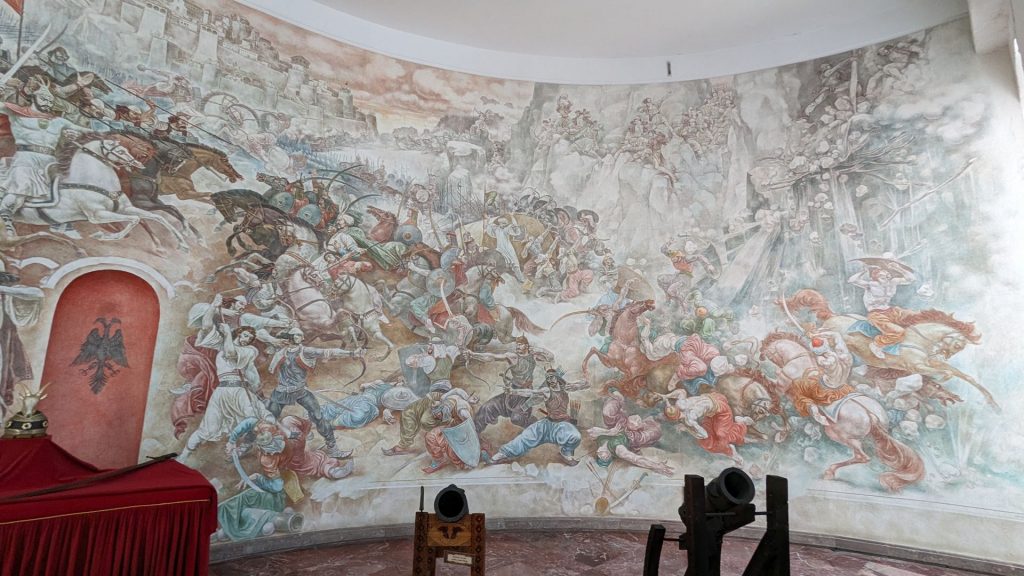
Fun fact: Over 1800 books have been written about Skanderbeg. In addition to the places listed on this map, they have been written in Stockholm, Vitberg, London, New York, Boston, and Toronto. That’s Michael’s finger pointing out Triana, the capital of Albania.
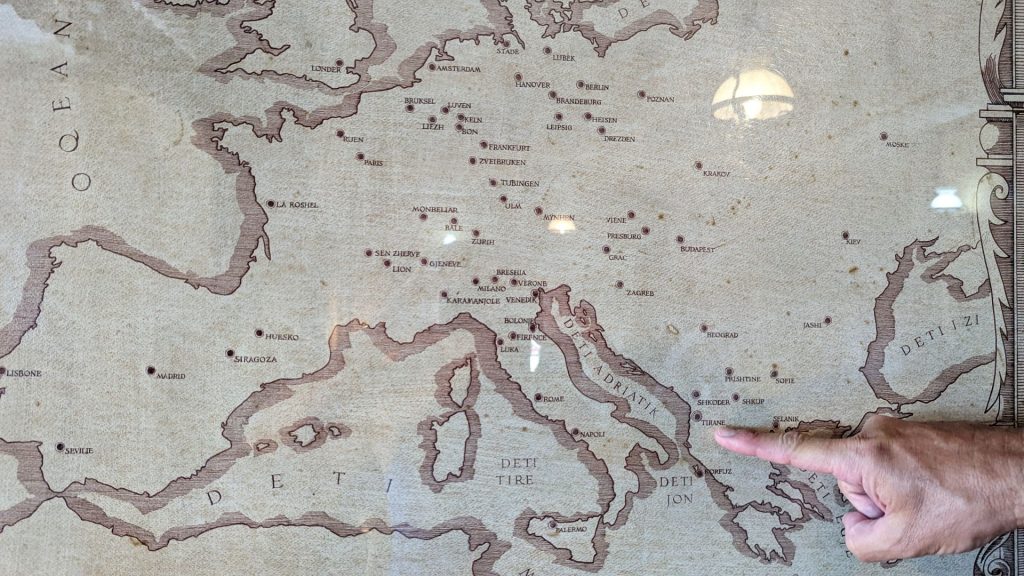
I haven’t shared any pictures of Albania’s pretty money yet, so it is time to do that now.
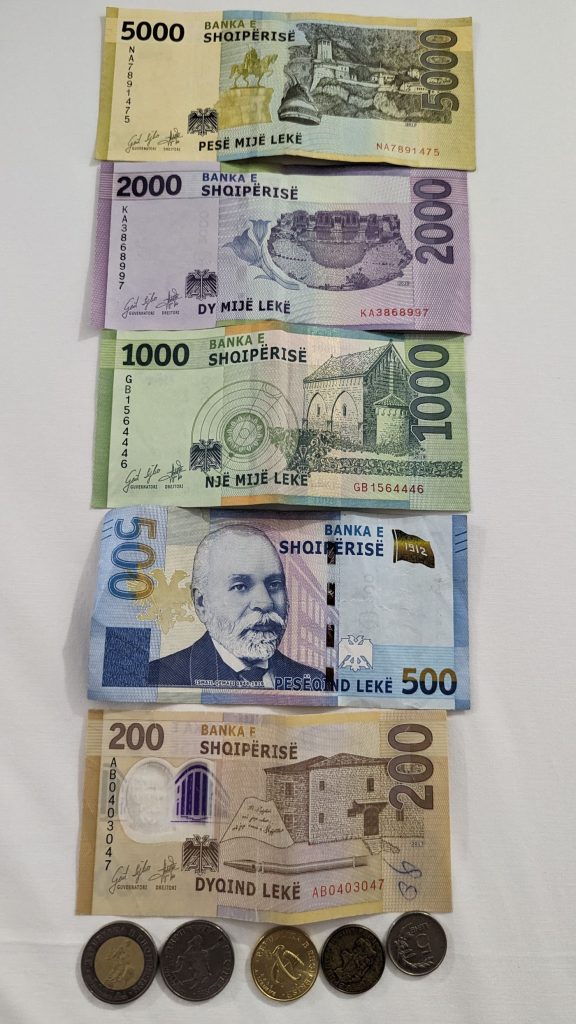
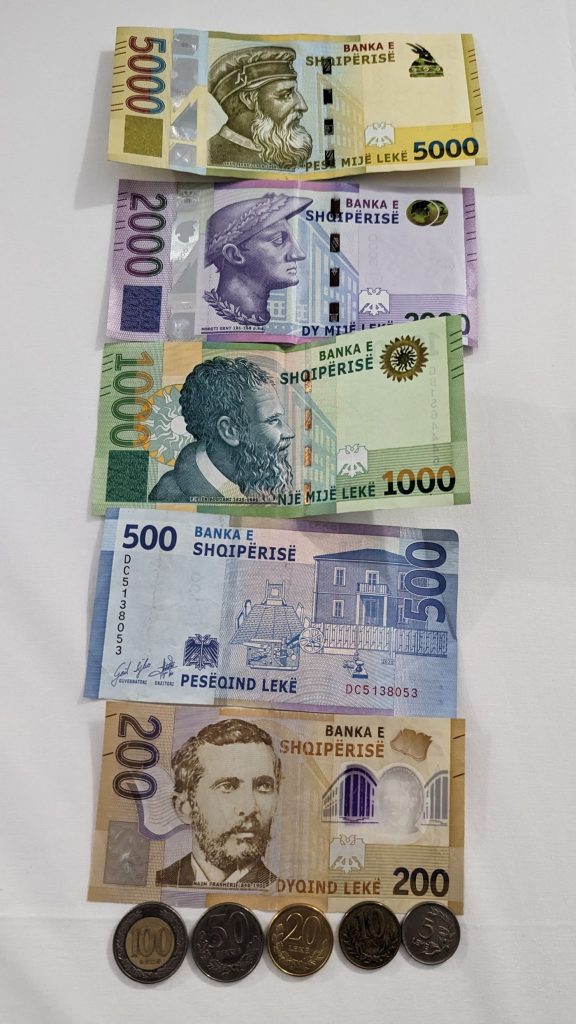
They clearly introduced new bills at some point because they have old and new versions. The newer versions are much prettier, and those are what we’ve displayed here.
We drove to Shkodër that night to find our hotel. The directions on the hotel’s website and the Google Navigation Lady both took us to the wrong place. After asking twice for directions (I was getting a tad worried that this would be a dump if it was so hard to find) we found it.
Oh. My. Goodness! It was a freakin’ resort! An adult pool, a children’s pool, good restaurants, lovely grounds, a playground for the children, located on the lake, lovely rooms with balconies. . . . Very nice! And I’m just gonna say it, they have the biggest wine pours I’ve ever seen.
Here are some pictures of the hotel and grounds:
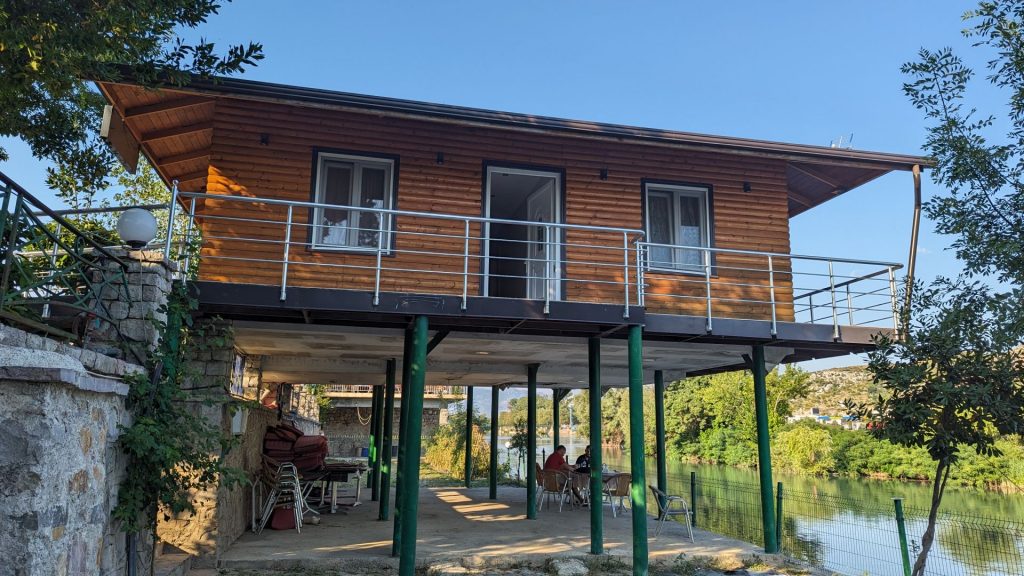
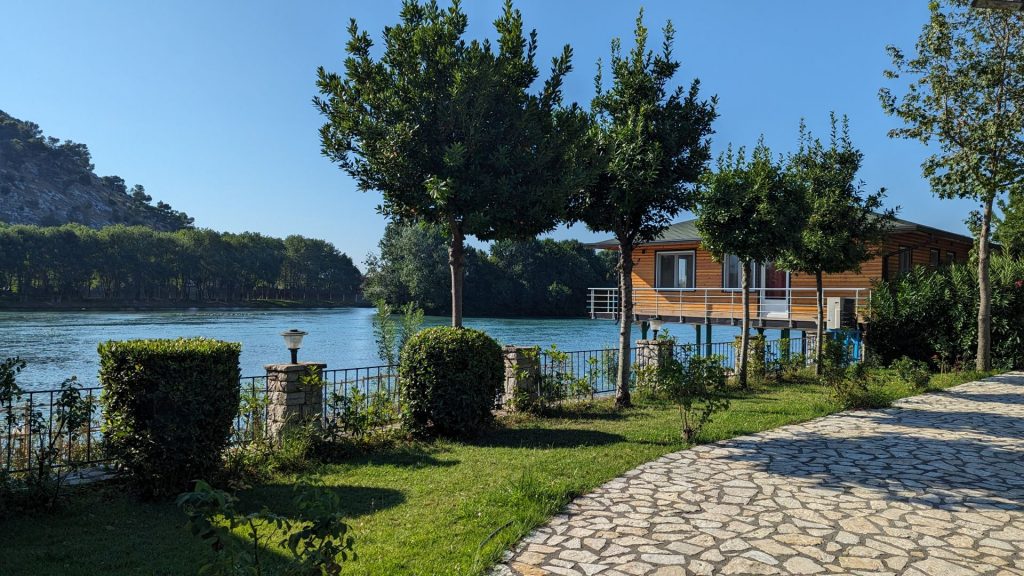
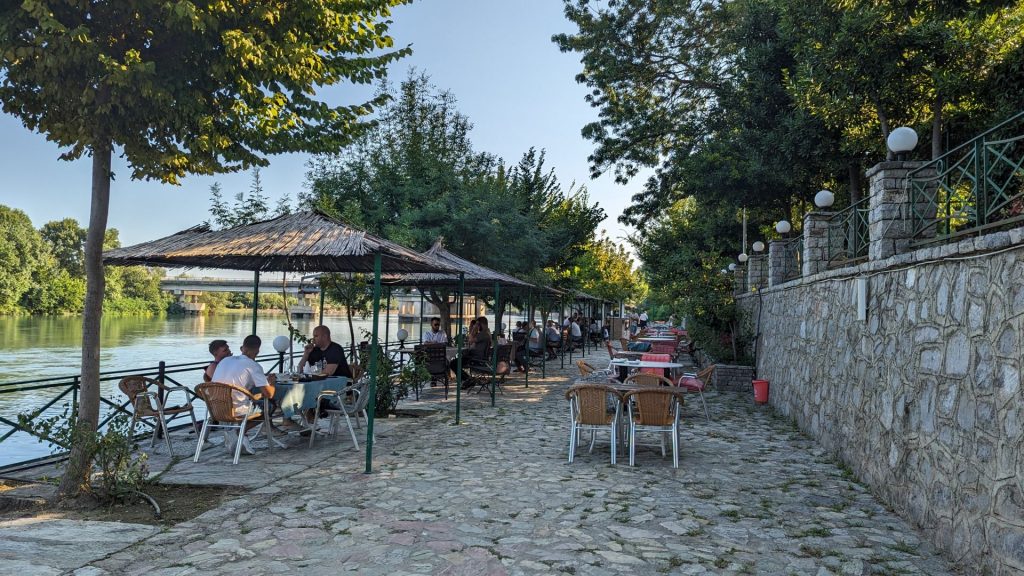
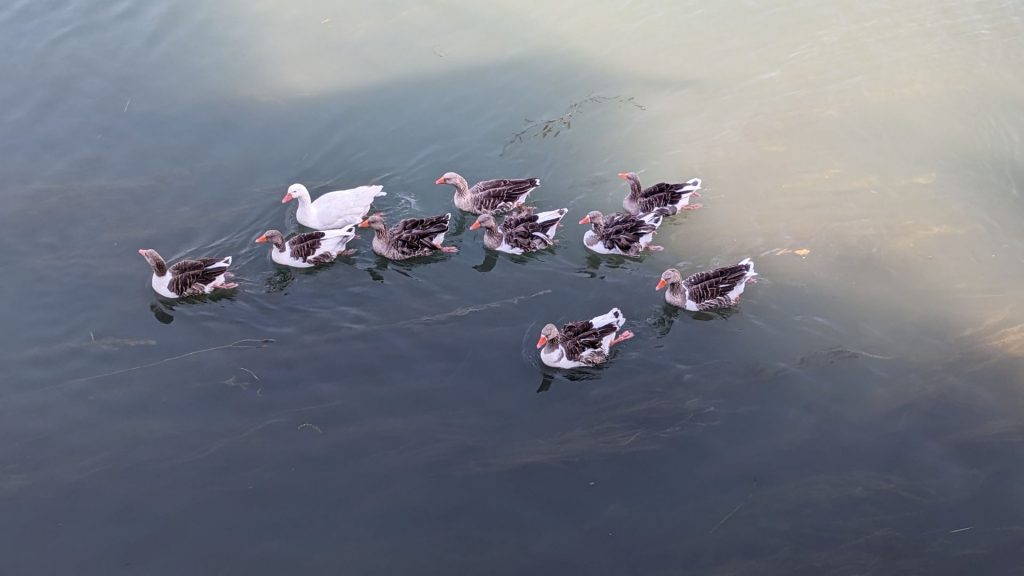
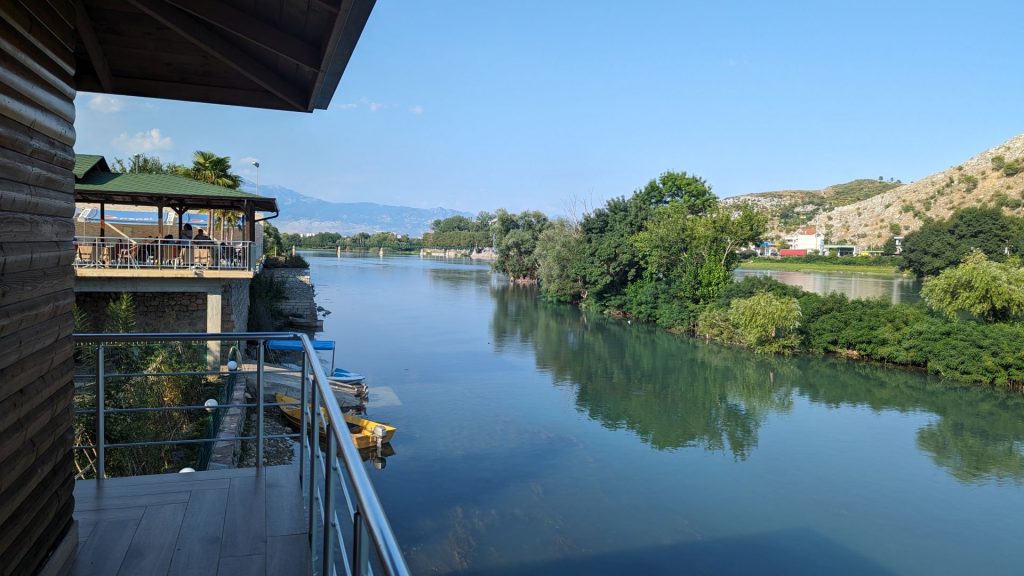
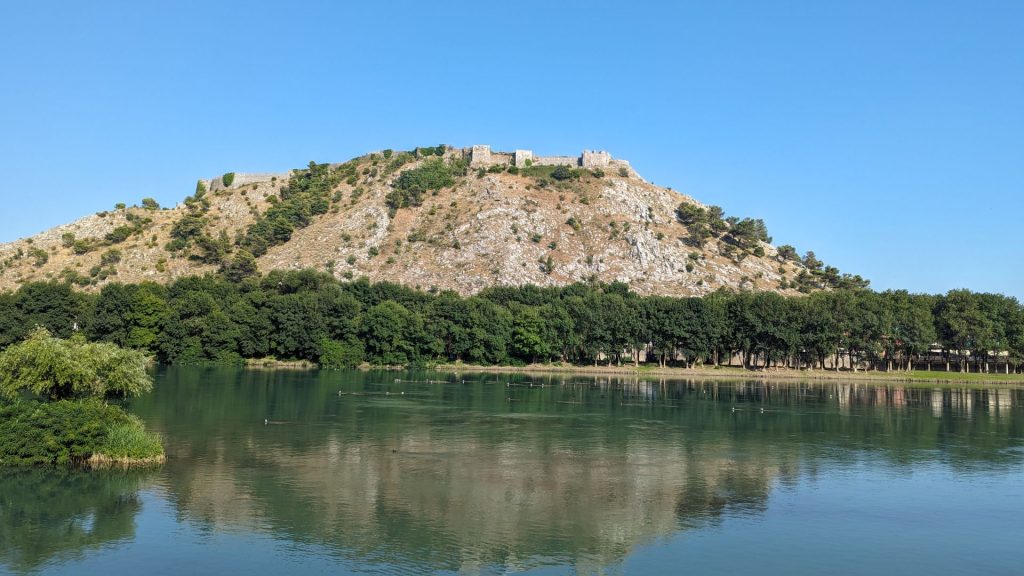
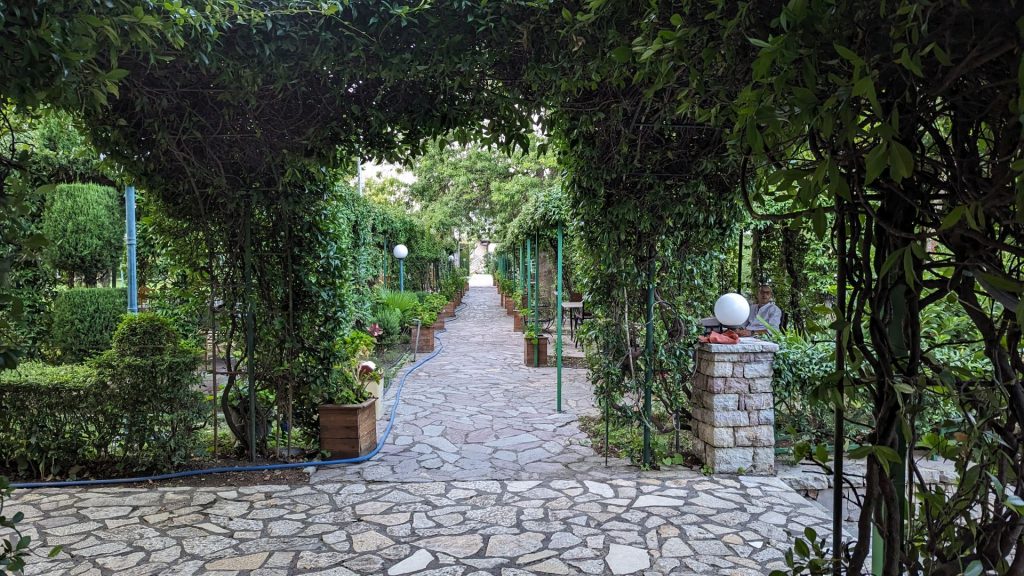
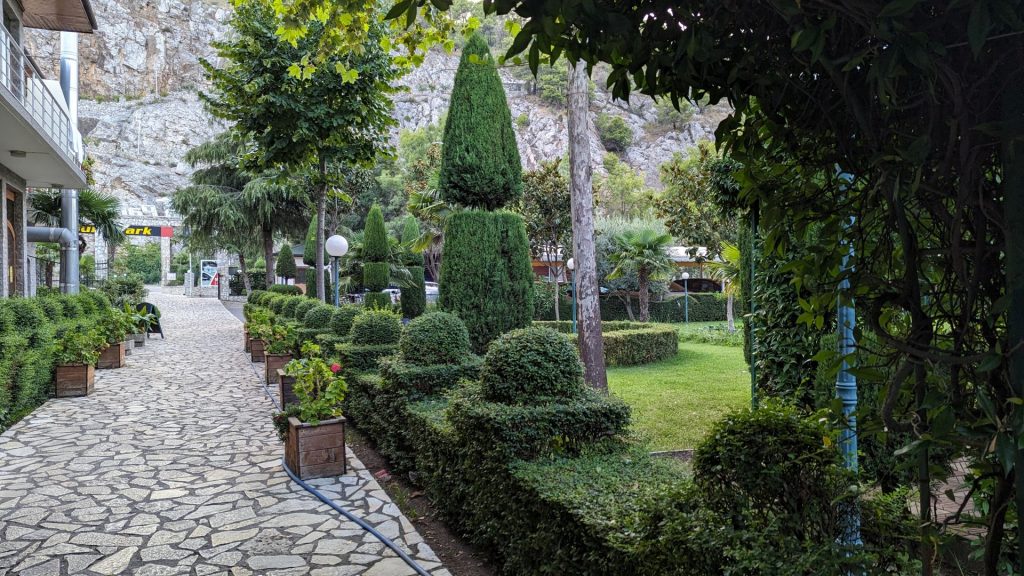
And just a couple of notes about Albania since this post is shorter than most.
These are the main agricultural products of Albania:
Tobacco, fruits including oranges, lemons, figs, grapes, vegetables such as olives, wheat, maize, potatoes but also sugar beets, meat, honey, dairy products, and traditional medicine and aromatic plants.
We saw many fields of maize (corn), olive trees, and grape vines. We were served fig jam quite a bit (yummy!). We saw honey for sale at markets and roadside stands. I ordered cornbread at one restaurant and was served something that has no resemblance to the cornbread we eat in America. It wasn’t sweet, it was dense and about 1/2 inch thick. It was topped with feta cheese and an almost tasteless cheese sauce. It was more white than yellow. I didn’t particularly enjoy the taste. But I am glad I tried it!
This is a good site for learning about the Albanian Agricultural Sector. This is a good source of information for Albanian Horticulture and Agriculture and Climate Change.
Now, let’s take a moment to talk about the drivers in Albania. I would say that a significant minority are aggressive drivers. Combine that with the fact that there are hardly any stop lights in Albania (I think we saw four in 11 days and three were in Triana), 90 percent of drivers go at least 30 kilometers/hour over the speed limit on the faster roads, 99 percent of them ignore stop signs, and the really aggressive drivers are major tailgaters. Put that all together, and you have a recipe for. . . . interesting driving! And I haven’t even talked about the narrow roads or the two-way roads with zero shoulders that can have significant drop-offs. Anywho, I honed my defensive driving skills and learned to be aggressive enough to bolt into traffic to make my own opening when need be. That was quite the adventure on its own! 🙂 🙂 I still don’t pass on turns. That is just silly.
Now, let’s talk about cars. The major brands are Mercedes, VW, and Audi. Many of these weren’t the luxury versions, but still, a lot of really nice cars.
As for animals on or near the road, we saw: horses (one trying to mate with another, but she wasn’t having it), cows, goats, sheep, donkeys, and – of course – cats and dogs.
You don’t say “cheers” in Albania when you share a drink, you say Gëzuar. I try to remember it by thinking of kazoo with an “r” at the end, but using a “g” instead of a “k” at the beginning.
We will finish reporting on our trip in the next post!
